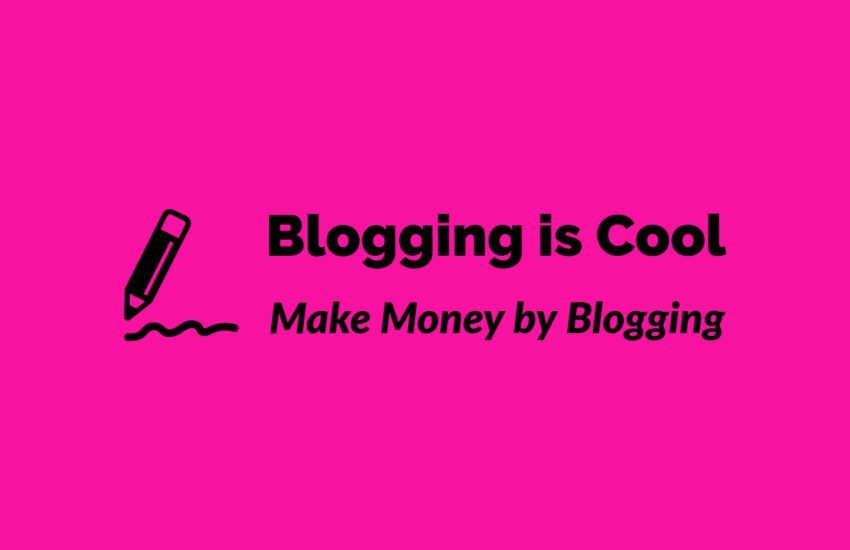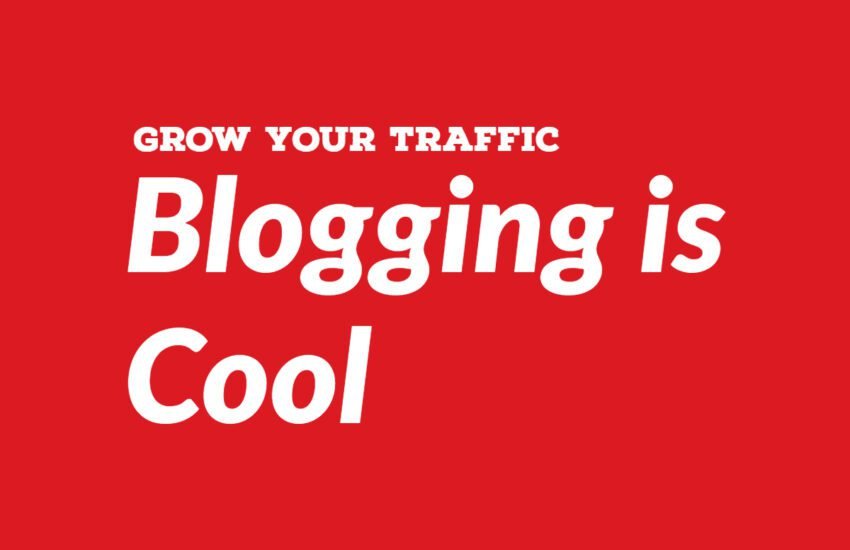The Importance of Building an Email List for Bloggers
As a blogger, one of your primary goals is to build a loyal readership and establish a strong relationship with your audience. While creating valuable content is essential, it’s equally important to have a direct line of communication with your readers. This is where building an email list becomes crucial.
An email list allows you to connect with your audience on a more personal level. It gives you the opportunity to reach out to your readers directly, bypassing the noise and distractions of social media algorithms. By collecting email addresses from your readers, you can send them targeted and personalized content, updates, and promotions.
- The Benefits of Building an Email List
- How to Build an Email List
- Conclusion
- Frequently Asked Questions
- 1. Why is building an email list important for bloggers?
- 2. How can an email list help bloggers increase website traffic and engagement?
- 3. What are some effective strategies for building an email list as a blogger?
- 4. How can an email list help bloggers monetize their blog?
- 5. How can bloggers optimize their email marketing strategy to maximize the effectiveness of their email list?
- 6. How can bloggers encourage subscribers to remain engaged with their email list over time?
- 7. How can bloggers ensure compliance with email marketing regulations and best practices?
- 8. How can bloggers measure the return on investment (ROI) of their email marketing efforts?
- 9. How can bloggers leverage segmentation and personalization to enhance the effectiveness of their email marketing campaigns?
- 10. How can bloggers leverage email marketing to build long-term relationships with their audience and foster brand loyalty?
The Benefits of Building an Email List
1. Increased Engagement
When someone subscribes to your email list, it shows that they are genuinely interested in your content. This means that they are more likely to engage with your emails, click on your links, and take action. Building an email list allows you to nurture these relationships and keep your readers engaged.
2. Direct Communication
Unlike social media platforms where your posts may get lost in the noise, emails have a higher chance of being seen and read by your audience. With an email list, you have a direct line of communication with your readers, allowing you to share important updates, exclusive content, and personalized offers.
3. Increased Traffic
Sending out regular emails to your subscribers can drive traffic back to your blog. By including links to your latest blog posts or promoting your products and services, you can encourage your subscribers to visit your blog, increasing your website traffic.
4. Monetization Opportunities
An email list opens up various monetization opportunities for bloggers. You can promote affiliate products, sell your own products or services, or even offer sponsored content to your subscribers. Having a targeted and engaged email list can significantly boost your income as a blogger.
How to Build an Email List
Now that you understand the importance of building an email list, let’s discuss how you can start growing your list:
1. Choose an Email Marketing Service
There are several email marketing services available, such as Mailchimp, ConvertKit, and AWeber. Choose a service that integrates well with your blogging platform and offers the features you need, such as opt-in forms and automation.
2. Create Opt-In Forms
Opt-in forms are essential for collecting email addresses. Place them strategically on your blog, such as in the sidebar, at the end of blog posts, or as pop-ups. Offer something of value, such as a free e-book or a newsletter, in exchange for their email address.
3. Promote Your Opt-In Forms
Don’t just rely on passive opt-in forms on your blog. Actively promote your opt-in forms on social media, guest posts, and other platforms where your target audience hangs out. Encourage your readers to subscribe and share the benefits of joining your email list.
4. Create Valuable Content
It is important to create content that your audience will be appreciative of. There’s nothing as annoying as receiving junk mail daily or even weekly that either doesn’t make sense to you or doesn’t provide any value. That’s one way to lose your subscribers pretty fast.
Conclusion
Once you have a few email subscribers, start working on your newsletter. It doesn’t matter if you only have 5 or 10 subscribers. The important thing is to start right away so you can begin to test and know what works and what doesn’t and make corrections so that by the time your campaign blows up, you are advanced in your delivery.
Frequently Asked Questions
1. Why is building an email list important for bloggers?
Building an email list is crucial for bloggers because it allows them to directly engage with their audience, nurture relationships, and drive traffic to their blog. Unlike social media platforms or search engines, an email list gives bloggers full control over their communication channels, enabling personalized and targeted messaging to subscribers. Additionally, an email list serves as a valuable asset that bloggers own and can leverage to promote content, products, or services, generate leads, and monetize their blog through affiliate marketing, sponsorships, or sales.
2. How can an email list help bloggers increase website traffic and engagement?
An email list can help bloggers increase website traffic and engagement by:
– Sending regular email updates, newsletters, or digests featuring new blog posts, curated content, or exclusive offers to subscribers.
– Encouraging subscribers to visit the blog by including links to relevant articles, resources, or landing pages in email campaigns.
– Using compelling subject lines, preview text, and calls-to-action to pique subscribers’ interest and encourage clicks to the blog.
– Segmenting email lists based on subscriber preferences, interests, or behavior to deliver targeted content that resonates with specific audience segments.
– Analyzing email performance metrics such as open rates, click-through rates, and conversion rates to optimize content and timing for maximum impact.
3. What are some effective strategies for building an email list as a blogger?
Some effective strategies for building an email list as a blogger include:
– Creating lead magnets such as ebooks, guides, or checklists to incentivize email sign-ups.
– Using opt-in forms, pop-ups, or slide-ins strategically on the blog to capture email addresses from visitors.
– Offering exclusive content, discounts, or freebies to subscribers as a value-added incentive to join the email list.
– Leveraging social media platforms, guest posting, or collaborations to expand reach and attract new subscribers.
– Hosting webinars, workshops, or online events that require email registration for participation.
– Implementing content upgrades, where additional resources or bonus content are offered in exchange for email sign-ups within specific blog posts.
– Running contests, giveaways, or sweepstakes with email entry requirements to incentivize participation and list growth.
– Encouraging referrals and word-of-mouth marketing by rewarding existing subscribers for referring new subscribers to the email list.
4. How can an email list help bloggers monetize their blog?
An email list can help bloggers monetize their blog by:
– Promoting affiliate products or services to subscribers through dedicated email campaigns, product reviews, or recommendations.
– Selling digital products such as ebooks, courses, or templates directly to subscribers via email marketing campaigns.
– Partnering with brands or sponsors to feature sponsored content or advertisements in email newsletters or dedicated email blasts.
– Launching and promoting online events, workshops, or membership programs exclusively to email subscribers.
– Offering consulting services, coaching sessions, or personalized assistance to subscribers through email communication.
– Conducting market research, surveys, or polls among subscribers to gather insights and feedback for product development or content creation.
– Implementing email marketing automation sequences, such as welcome series, nurture sequences, or abandoned cart emails, to drive conversions and sales.
– Cultivating long-term relationships with subscribers through consistent and valuable email communication, leading to repeat purchases, referrals, and brand loyalty.
5. How can bloggers optimize their email marketing strategy to maximize the effectiveness of their email list?
Bloggers can optimize their email marketing strategy to maximize the effectiveness of their email list by:
– Segmenting their email list based on subscriber demographics, preferences, or engagement levels to deliver targeted and relevant content.
– Personalizing email content, subject lines, and calls-to-action to resonate with individual subscribers and increase engagement.
– Testing different email elements such as subject lines, sender names, and email designs to identify what resonates best with their audience.
– Monitoring email performance metrics and key performance indicators (KPIs) such as open rates, click-through rates, and conversion rates to measure success and identify areas for improvement.
– Implementing email list hygiene practices such as removing inactive subscribers or re-engaging dormant subscribers to maintain list health and deliverability.
– Providing valuable and educational content in email campaigns that align with subscriber interests and needs, rather than focusing solely on promotional messages.
– Using email automation workflows to streamline repetitive tasks, nurture leads, and deliver timely and relevant messages throughout the subscriber lifecycle.
– Continuously testing and iterating on email marketing tactics, strategies, and content to adapt to changes in audience preferences, industry trends, and email best practices.
6. How can bloggers encourage subscribers to remain engaged with their email list over time?
Bloggers can encourage subscribers to remain engaged with their email list over time by:
– Providing consistent and valuable content that meets subscriber expectations and interests.
– Using storytelling, humor, or personality in email communication to create emotional connections and build rapport with subscribers.
– Encouraging interaction and feedback through polls, surveys, or replies to email campaigns to foster two-way communication and engagement.
– Offering exclusive benefits or rewards to loyal subscribers, such as VIP access, early bird discounts, or special offers.
– Incorporating interactive elements such as quizzes, contests, or challenges in email campaigns to keep subscribers actively engaged.
– Implementing segmentation and personalization strategies to deliver targeted content that resonates with specific subscriber segments.
– Using email marketing automation to send timely and relevant messages based on subscriber behavior, preferences, or lifecycle stage.
– Experimenting with different email formats, content types, and delivery frequencies to keep email content fresh, engaging, and diverse.
7. How can bloggers ensure compliance with email marketing regulations and best practices?
Bloggers can ensure compliance with email marketing regulations and best practices by:
– Obtaining explicit consent from subscribers before adding them to the email list and providing clear information about what they can expect to receive.
– Including a visible and easy-to-find unsubscribe link in every email campaign to allow subscribers to opt out of future communications.
– Honoring unsubscribe requests promptly and removing unsubscribed contacts from the email list within the required timeframe.
– Using reputable email marketing platforms or services that comply with data protection regulations such as GDPR or CAN-SPAM.
– Providing a valid physical mailing address and contact information in email campaigns, as required by email marketing regulations.
– Segmenting email lists and respecting subscriber preferences regarding email frequency, content types, and communication preferences.
– Regularly monitoring changes in email marketing regulations, guidelines, and best practices to ensure ongoing compliance and adherence to industry standards.
– Educating team members or staff involved in email marketing about compliance requirements and best practices to prevent inadvertent violations or errors.
8. How can bloggers measure the return on investment (ROI) of their email marketing efforts?
Bloggers can measure the return on investment (ROI) of their email marketing efforts by:
– Tracking key performance indicators (KPIs) such as open rates, click-through rates, conversion rates, and revenue generated from email campaigns.
– Calculating the cost per lead or cost per acquisition for email marketing activities by dividing total campaign costs by the number of leads or conversions generated.
– Using email attribution models to assign credit to email marketing touchpoints along the customer journey and assess their impact on conversions and revenue.
– Conducting A/B testing or split testing of different email elements, strategies, or offers to identify what drives the highest ROI.
– Analyzing customer lifetime value (CLV) and retention rates for email subscribers compared to non-subscribers to evaluate the long-term impact of email marketing on customer loyalty and revenue.
– Integrating email marketing data with other marketing analytics platforms or customer relationship management (CRM) systems to gain a holistic view of campaign performance and ROI.
– Benchmarking email marketing performance against industry averages and best practices to assess performance relative to peers and competitors.
9. How can bloggers leverage segmentation and personalization to enhance the effectiveness of their email marketing campaigns?
Bloggers can leverage segmentation and personalization to enhance the effectiveness of their email marketing campaigns by:
– Segmenting their email list based on subscriber demographics, preferences, behavior, or engagement levels to deliver targeted and relevant content.
– Personalizing email subject lines, sender names, and content based on subscriber data such as name, location, purchase history, or browsing behavior.
– Using dynamic content blocks or conditional logic to tailor email content to individual subscriber interests, preferences, or lifecycle stage.
– Sending targeted email campaigns to specific segments of their audience based on criteria such as past purchase behavior, engagement with previous emails, or stage in the sales funnel.
– Implementing triggered or automated email workflows based on subscriber actions or events, such as welcome emails, abandoned cart reminders, or re-engagement campaigns.
– Testing different segmentation and personalization strategies to identify what resonates best with their audience and drives the highest engagement and conversion rates.
– Monitoring email performance metrics and KPIs for segmented campaigns to measure the impact of segmentation and personalization on campaign effectiveness and ROI.
10. How can bloggers leverage email marketing to build long-term relationships with their audience and foster brand loyalty?
Bloggers can leverage email marketing to build long-term relationships with their audience and foster brand loyalty by:
– Providing consistent and valuable content that educates, entertains, or solves problems for subscribers.
– Using storytelling, humor, or personal anecdotes in email communication to create emotional connections and foster rapport with subscribers.
– Encouraging interaction and engagement through polls, surveys, contests, or user-generated content that solicits feedback and participation from subscribers.
– Offering exclusive benefits or rewards to loyal subscribers, such as VIP access, early bird discounts, or special offers.
– Sending personalized emails that acknowledge subscriber milestones, birthdays, or anniversaries to make subscribers feel valued and appreciated.
– Soliciting feedback and input from subscribers on product development, content creation, or business decisions to involve them in the brand’s evolution and decision-making process.
– Using email automation to deliver timely and relevant messages throughout the subscriber lifecycle, from onboarding and welcome sequences to post-purchase follow-ups and re-engagement campaigns.
– Monitoring email engagement metrics and subscriber feedback to continuously optimize email content, frequency, and strategy based on subscriber preferences and behaviors.
– Rewarding and incentivizing referrals, word-of-mouth marketing, and advocacy among subscribers to cultivate a community of brand ambassadors and advocates.
By implementing these strategies, bloggers can leverage email marketing to build stronger connections with their audience, drive engagement and conversions, and ultimately foster brand loyalty and advocacy over time.


